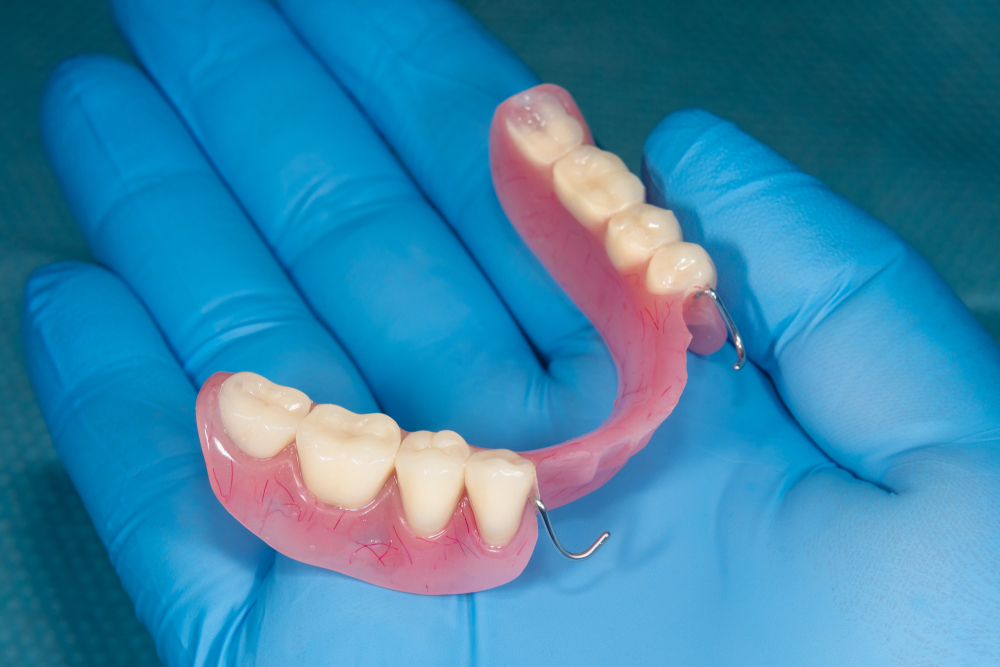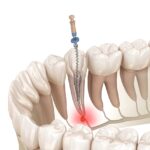Partial Dentures Before and After
Partial dentures are dental appliances that can replace missing teeth and restore the function and aesthetics of the mouth. They can significantly improve a person’s smile and ability to chew and speak properly.
By filling in gaps left by missing teeth, partial dentures can enhance the overall appearance of the mouth and face. They are custom-made to fit comfortably and securely in the mouth, ensuring a natural look and feel. Whether due to age, injury, or dental conditions, partial dentures can be a suitable solution for individuals looking to restore their smile and regain their confidence.
Choosing Partial Dentures
| Choosing Partial Dentures
Partial dentures are a popular choice for individuals who have lost some of their natural teeth. When it comes to choosing partial dentures, there are different types to consider. |
| Types of Partial Dentures
1. Cast Metal Partial Dentures: These are durable and lightweight, making them a comfortable option. They are made with a metal framework and can be customized to fit your mouth perfectly. 2. Flexible Partial Dentures: These dentures are made from a flexible material that allows for a more natural feel and appearance. They are also more comfortable and less likely to break. 3. Acrylic Partial Dentures: These are a more affordable option and can be easily adjusted or repaired if needed. However, they may not be as durable as other types of partial dentures. |
| Finding the Right Fit
When choosing partial dentures, it is essential to find the right fit. An ill-fitting denture can cause discomfort and affect your ability to eat and speak properly. Consult with a dental professional who can evaluate your oral health and recommend the best type of partial denture for you. They will take impressions of your mouth to ensure a custom fit. Regular check-ups and adjustments may be necessary to maintain the optimal fit of your partial dentures. Follow your dentist’s instructions for proper care and cleaning to prolong the lifespan of your dentures. |
Life With Dentures
Adjusting to life with dentures can take time. Initially, speaking and eating may feel strange. It’s important to follow a daily routine for cleaning and soaking the dentures. A gradual adjustment period is necessary for the mouth and tongue to get used to the new appliance.
Some soreness and irritation are common during this time. It may take a few weeks for the dentures to feel normal. Before and after photos can provide a visual representation of the changes and improvements brought about by partial dentures.
Denture Care And Maintenance
Proper care and maintenance of partial dentures is essential to ensure their longevity and effectiveness in restoring your smile. Regular cleaning is crucial to prevent the buildup of plaque and bacteria, which can lead to tooth decay and gum disease.
When cleaning your partial dentures, use a soft-bristled toothbrush and non-abrasive denture cleaner to gently scrub away any debris. Avoid using hot water or bleach, as these can damage the denture material.
Long-term care involves regular dental checkups to ensure the dentures fit properly and to address any issues that may arise. If an abutment tooth is lost or damaged, a new partial may be necessary. Additionally, it may take some time for your mouth to adjust to the new appliance, so be patient and follow your dentist’s instructions for wear time.
Pros And Cons
Partial dentures offer both advantages and disadvantages. On the positive side, they provide a cost-effective solution for replacing missing teeth, improving speech and chewing ability.They can also lead to plaque buildup, tooth decay, and gum disease, as well as potential trauma to abutment teeth and gums.
In some cases, the loss of an abutment tooth may require a new partial denture.
| Benefits of Going Partial | Potential Drawbacks |
| – Partial dentures are typically more affordable than other tooth replacement options. | – Partial dentures can increase the buildup of plaque around the abutment teeth leading to tooth decay and gum disease. |
| – They are removable and easy to clean. | – The abutment teeth may experience trauma along with the gums due to the pressure and movement of the partial. |
| – Partial dentures can improve your speech and ability to eat and chew properly. | – The loss of an abutment tooth may require a new partial. |
| – They can help maintain the shape of your face and prevent further tooth loss. |
Partial dentures can be a great option for those looking to replace missing teeth. They offer several benefits such as affordability, ease of cleaning, and improvement in speech and chewing ability.They can help maintain the shape of your face and prevent further tooth loss.
There are some potential drawbacks to consider. Partial dentures can increase the buildup of plaque around the abutment teeth leading to tooth decay and gum disease. The pressure and movement of the partial can also cause trauma to the abutment teeth and gums. In some cases, the loss of an abutment tooth may require a new partial.
Technical Aspects
Transform your smile with partial dentures before and after. Experience the benefits of improved appearance and functionality, as well as the convenience of removable dentures. Say goodbye to gaps and hello to a confident, beautiful smile.
| Material and Design: | Partial dentures are made with different materials such as acrylic, flexible resin, and metal. The material used for the denture base depends on the patient’s needs and preferences. The design of the partial denture is also customized to fit the patient’s mouth.
The denture is designed to be stable and comfortable in the patient’s mouth while also blending in with their natural teeth. A well-designed partial denture should allow the patient to eat and speak normally without any discomfort. |
| Customization Process: | The process of creating partial dentures involves several steps. First, the dentist will take impressions of the patient’s mouth to create a model. This model is used to create a wax replica of the denture. The wax replica is then tried on the patient’s mouth to ensure a proper fit.
Once the fit is confirmed, the wax replica is used to create the final partial denture. The final denture is then adjusted to ensure comfort and stability in the patient’s mouth. The customization process ensures that the partial denture is tailored to the patient’s specific needs and preferences. |
Emotional And Social Impact
Transforming your smile with partial dentures can have a profound emotional and social impact. Before, you may have felt self-conscious about missing teeth, but after getting partial dentures, you can enjoy increased confidence and improved interactions with others.
Expert Insights
Partial dentures can have a significant impact on a person’s oral health and appearance. They are designed to fill in the gaps created by missing teeth, providing support for the surrounding teeth and preventing them from shifting.
This can help maintain the natural shape of the face and improve overall dental function. However, it’s important to consider both the advantages and potential drawbacks of partial dentures before making a decision.
Frequently Asked Questions
What Are The Disadvantages Of Partial Dentures?
Partial dentures can lead to plaque buildup, tooth decay, and gum disease. They may cause trauma to abutment teeth and gums due to pressure and movement, potentially requiring new partials.
Can You Tell If Someone Is Wearing Partial Dentures?
Partial dentures nowadays are designed to be sturdy, flexible, and natural-looking. In most cases, it is difficult to tell if someone is wearing them. Modern dentures blend seamlessly with the natural teeth, making them virtually undetectable.
How Long Does It Take For Partial Dentures To Feel Normal?
It typically takes a few weeks for partial dentures to feel normal as your mouth adjusts to them. During this adjustment period, you may experience some discomfort, soreness, and irritation. Your tongue and muscles need time to adapt to holding the dentures in place.
How Many Hours A Day Should You Wear Partial Dentures?
It’s recommended to wear partial dentures for 8-10 hours a day to allow your gums to rest.
Conclusion
Partial dentures can provide a natural-looking solution for missing teeth. They may take some time to adjust to, but modern dentures are sturdy and comfortable. While there may be some initial discomfort, the benefits of improved oral function and aesthetics make the adjustment period worthwhile.
Whether it’s for function or aesthetics, partial dentures can be a life-changing dental solution.




